Burning stuff is depriving us of years of healthy living
A new study looks at the chemicals in our homes and their effect on DALYs, an important metric we should use more often.
A lot of people are flipping out over per-and poly-fluoroalkyl substances (PFAS) these days, and not without good reason; as the US Environmental Protection Agency notes, “Scientific studies have shown that exposure to some PFAS in the environment may be linked to harmful health effects in humans and animals.” But what flips me out is that everyone gets preoccupied with the latest new thing and ignores the clear and present danger of the stuff that we are breathing and ingesting with known harmful effects. I can imagine a family sitting around the dinner table discussing PFAS while eating a meal cooked on a gas stove, while a recent study, “A preliminary assessment of the health impacts of indoor air contaminants determined using the DALY metric,” shows us what we should really be worrying about now.
The DALY metric is a fascinating and useful tool. A good definition:
“DALY is an abbreviation for disability-adjusted life year. It is a universal metric that allows researchers and policymakers to compare very different populations and health conditions across time. DALYs equal the sum of years of life lost (YLLs) and years lived with disability (YLDs). One DALY equals one lost year of healthy life. DALYs allow us to estimate the total number of years lost due to specific causes and risk factors at the country, regional, and global levels.”
The DALY metric is useful because we often hear about the number of deaths caused by something, but rarely do we hear about the lost years of healthy living that injuries or health conditions cause. I often point to this chart comparing deaths caused by automobiles to the DALYs, and the difference is staggering: 1.5 million deaths in a year, but close to 80 million DALYs lost. We need to look at the DALYs to understand the true cost of years lost.
The study* searched the literature and collected information on “risk estimates, baseline incidence rates, damage factors, indoor air contaminant concentrations, human toxicological & epidemiological effect factors, dose–response factors, cancer-related variables and breathing rates.”
The study found that Particulate matter caused the highest DALYs, with PM2.5 (particulate matter smaller than 2.5 microns) being the worst. PM10 looks worse, but it includes the PM2.5. These are an order of magnitude worse than the formaldehyde, nitrogen dioxide, radon, ozone, Sulfur dioxide, Acrolien, Acrylonitrile, Crotonaldehyde and bioaerosols (mould). I have never even heard of some of these in the top ten, so let’s have a closer look at what they are and where they come from.
Particulate Matter
According to the EPA, a lot of it comes from outside the home. “Car exhaust, smoke, road dust, pollen and some factory emissions contain PM. Wildfires are another source of outdoor PM. PM is higher near busy roads and where people burn wood.” This begs the question of why we keep approving high-density housing that almost hangs over our expressways and why we put up with NIMBYs who insist that apartment buildings belong on main streets, not in residential neighbourhoods.
Indoors, PM2.5 and PM10 come primarily from burning stuff. We never used to measure them because we were swimming in it from smokers and coal-burning utilities, but now candles, fireplaces and gas stoves, which pump out twice as much as when cooking on an electric stove, are dominant sources. The EPA and other agencies do not mention gas stoves because the gas industry lobbyists have been hard at work, but seriously, it is time to get them out of our houses.
PMs also come from outdoor soil and dust; take off your shoes when you come home. They really can be made of anything, including pollen and mould. It's time to get better air filters.
Here are the Canadian government’s guidelines on particulates, “Indoor levels of PM2.5 should be kept as low as possible, as there is no apparent threshold for the health effects of PM2.5.” I frankly trust the Canadian information more than the EPA’s, which often seems politicized. Both suggest that it’s time to throw out your scented candles.
Formaldehyde
The American Chemistry Council is hard at work telling us that formaldehyde is natural, but as they say, so is arsenic. The DALYs tell another story, placing it right behind PM. The primary sources in our homes are the glues and adhesives in particleboards and fibreboards that modern cheap furniture and kitchens are made of, though these will eventually outgas. But it is one reason I am a big fan of vintage furniture made from solid wood.
And the most significant continuing source of it in a home is- guess what- your gas stove.
Nitrogen Dioxide
Another chemical that comes from burning stuff; according to Health Canada, “Major anthropogenic sources of ambient NO2 include emissions from vehicles, aircraft, locomotives, fossil fuel power stations, industrial processes, and building heating systems. Potential indoor sources of NO2 include gas, wood or kerosene appliances such as furnaces, space heaters, stoves, and water heaters.” The gas appliances are not a serious problem if they are properly vented, but “In the case of gas stoves, the degree of venting is variable as this depends on the presence and efficacy of the range hood exhaust fan as well as the extent to which residents use the fan while cooking.” They note that NO2 levels are usually double in homes with gas stoves. According to air sensor company Clarity:
“NO₂ is also a precursor to other air pollutants, including particulate matter and ozone. It can be hard to separate the negative health outcomes of NO₂ from these other pollutants, especially since they often occur in the same environments. However, recent studies have found that increased mortality, hospital admissions, respiratory symptoms, and decreased lung function can be directly linked to nitrogen dioxide pollution.”
Radon
According to Health Canada, radon is the #1 cause of lung cancer in non-smokers. It forms from the radioactive breakdown of uranium in the soil and leaks into our homes through our foundations and slabs. Some houses have it; some don’t, but cheap tests are available at the big boxes; I will try this one and report back as soon as the results are in.
Ozone (O3)
Most ground-level ozone in our homes comes from outside, caused when sunlight reacts with nitrogen dioxide from car exhausts. So again, we should question why we keep putting our high-density housing next to highways. Other indoor sources include printers and copiers; put them in the garage if you have one. (I am definitely going to move mine.) The Canadian government did exposure studies that came up with a reference standard of 8 µg/m3 (4 ppb) but found that “An exposure limit based on the reference concentration for prolonged ozone exposure may not, however, be achievable in many Canadian homes.”-the ambient levels were too high, so they came up with a “realistic” standard of 40 µg/m3 or 20 ppb.
Sulfur Dioxide
Most SO2 comes from burning coal, and levels have dropped for decades since the acid rain crisis of the seventies; I was surprised to see it so high on the DALYs. But “In homes, sulfur dioxide gas can result from tobacco smoke, improperly or inadequately vented gas appliances (such as stoves, ranges, furnaces, or clothes dryers), gas or kerosene heaters, wood or coal stoves, automobile exhaust from attached garages, and malfunctioning chimneys.”
Acrolein, Acrylonitrile, and Crotonaldehyde
I have never heard of any of these. Acrolien is formed from burning fat while cooking or from smoking. It causes irritation and blistering, and was used in hand grenades in the First World War. Acrylonitrile comes from smoking and auto exhaust. Crotonaldehyde is released from smoking, gasoline and diesel exhaust, burning wood and, yes, gas stoves. The best advice would be not to have cigarettes or hand grenades in your home.
Bioaerosols (Mould)
I was surprised that mould was so far down the list, particularly since it is such a big issue in the UK now, and the lead authors in the study are from the University of Nottingham. According to the Guardian,
“Moulds release tiny spores in their thousands that are carried in the air. These microscopic particles can trigger allergic reactions in about 5% of the population. In dry and well-ventilated buildings, spores are rarely a problem. But when mould takes hold, spores can build up… The effects can range from a stuffy nose, coughs and wheezes to life-threatening asthma attacks and infections. A study by the US Environmental Protection Agency attributed more than a fifth of national asthma cases to damp and mould.”
I was not alone in being surprised at how far down the list mould was. I learned about the study via a LinkedIn post by Irish consultant Simon Jones, who complains about this. Still, I suspect that the nature of the study, which relied on “Systematic searches and reviews of peer-reviewed literature (including systematic reviews and meta-analyses) were performed to find information on said input parameters.” Mould was part of our lives, and I don’t think I was considered such a big deal until relatively recently. That might also be why PFAS are not even on the list; there probably was not enough literature to review. It’s also possible that some of the PM is actually mould.
Read Kate de Selincourt in Passive House Plus to learn how bad a problem it can be.
Conclusion: we have to stop burning stuff
Count those DALYs and the thousands of happy, healthy years that are lost (1900 per 100,000 people for PM10 alone), add in the formaldehyde and nitrogen dioxide, and think about how the gas industry has been gaslighting us; it is clear that nobody should have a gas stove in their home. Now that we have induction ranges, there is no reason not to switch; even my wife will attest to this, and she had to be dragged kicking and screaming. But everything else that we burn is a problem, from fireplaces to candles and vented gas appliances like furnaces and water heaters. It doesn’t have to be this way anymore; We have options (like heat pumps) that we never used to have.
But we also have to worry about the air outside our homes, which is seriously polluted from car exhaust. We shouldn’t have situations like this in Toronto, where there are apartment balconies ten feet away from a busy highway; we are poisoning everyone who lives there. Or, instead of turning the Gardiner expressway into a bike route once a year, we could make it permanent.
DALYs provide a different perspective. It’s unlikely that your gas stove or your apartment overlooking a highway will kill you, but it can definitely cut happy, healthy years off your life. There is only one conclusion: We have to stop burning stuff.
*Citation: Giobertti Morantes, Benjamin Jones, Max Sherman & Constanza Molina (2023) A preliminary assessment of the health impacts of indoor air contaminants determined using the DALY metric, International Journal of Ventilation, 22:4, 307-316, DOI: 10.1080/14733315.2023.2198800
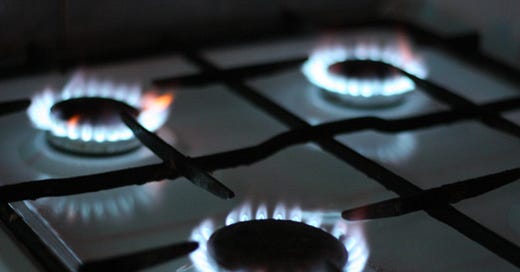



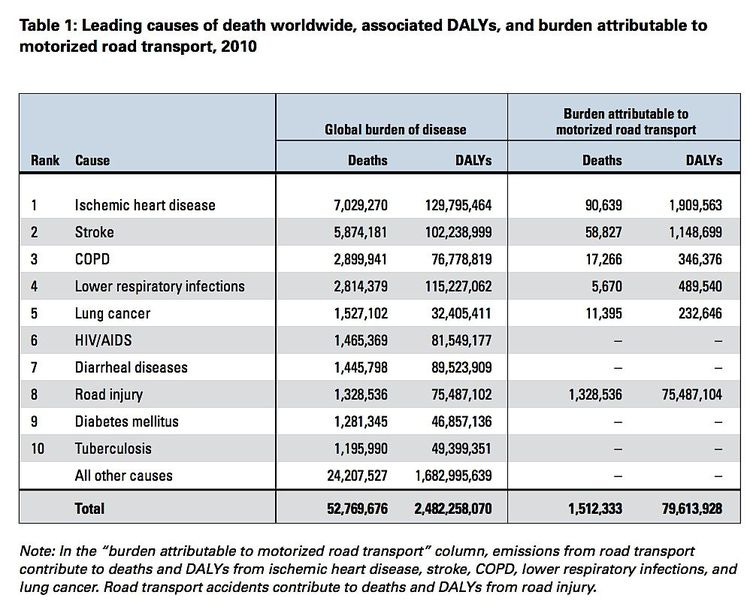

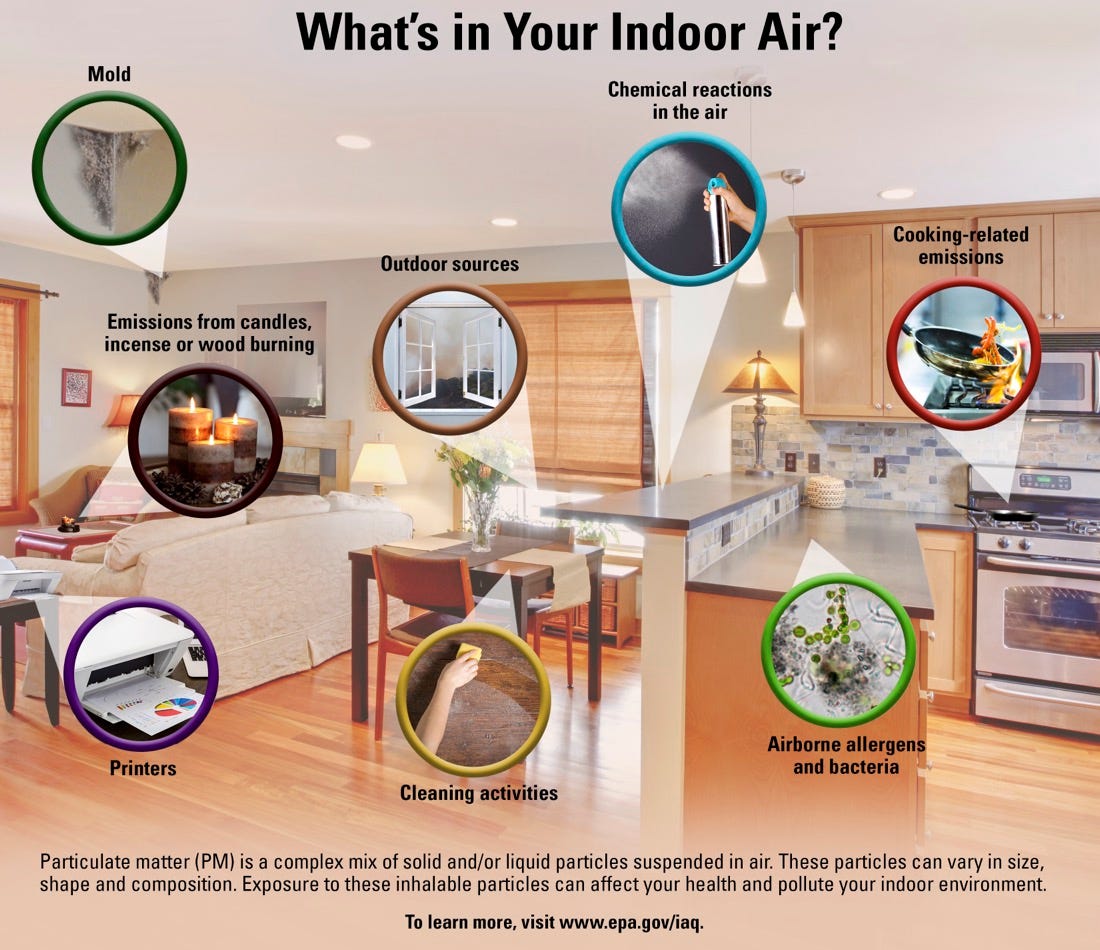




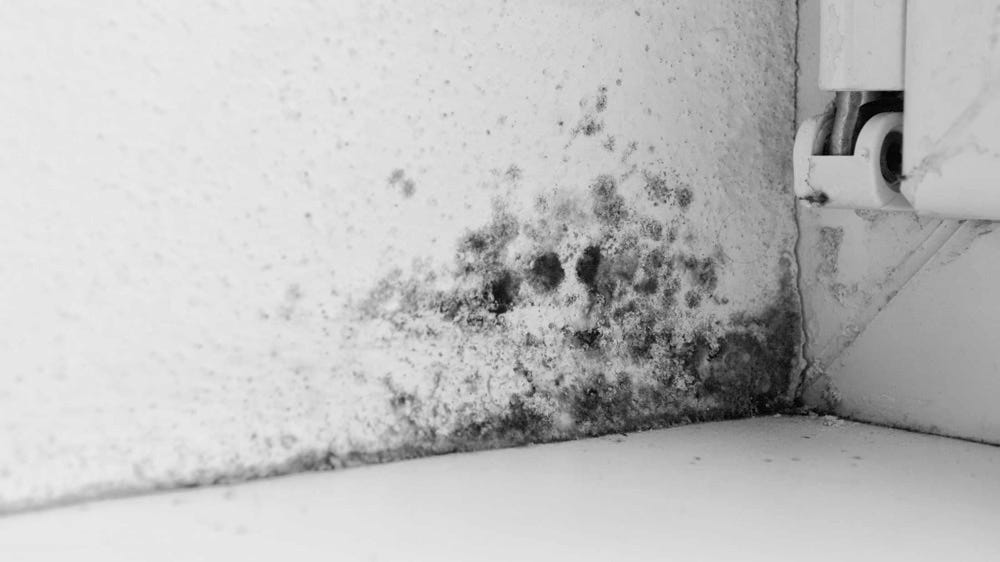
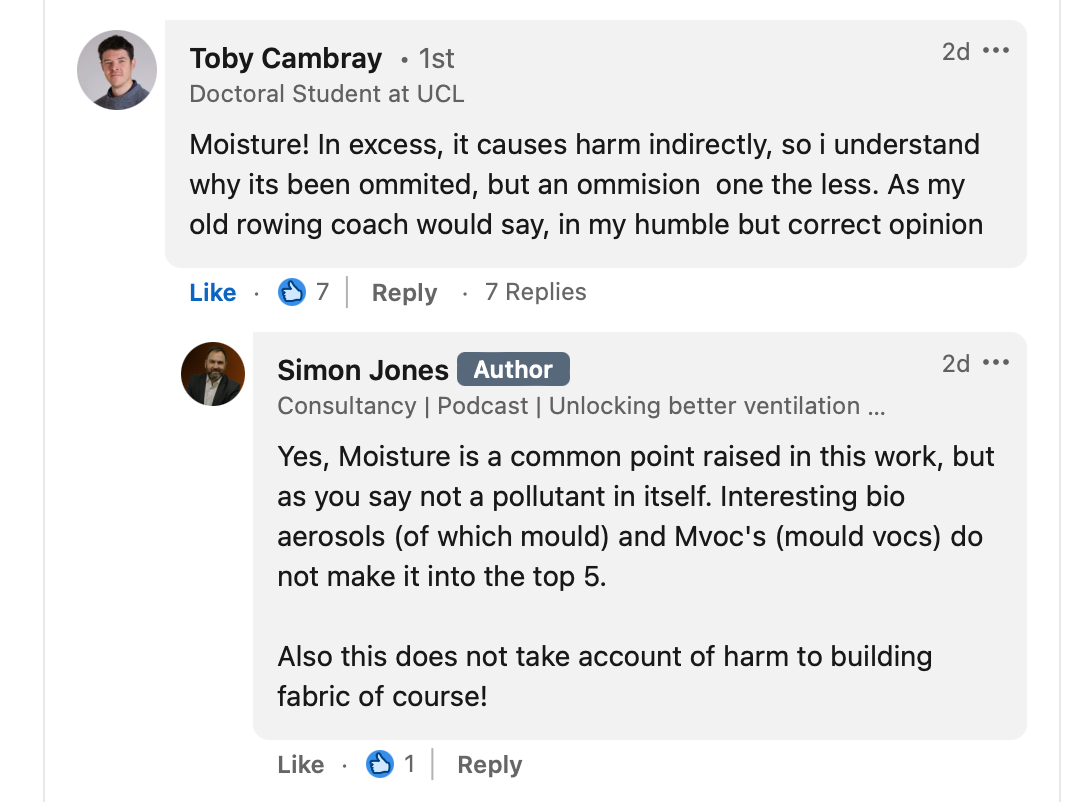

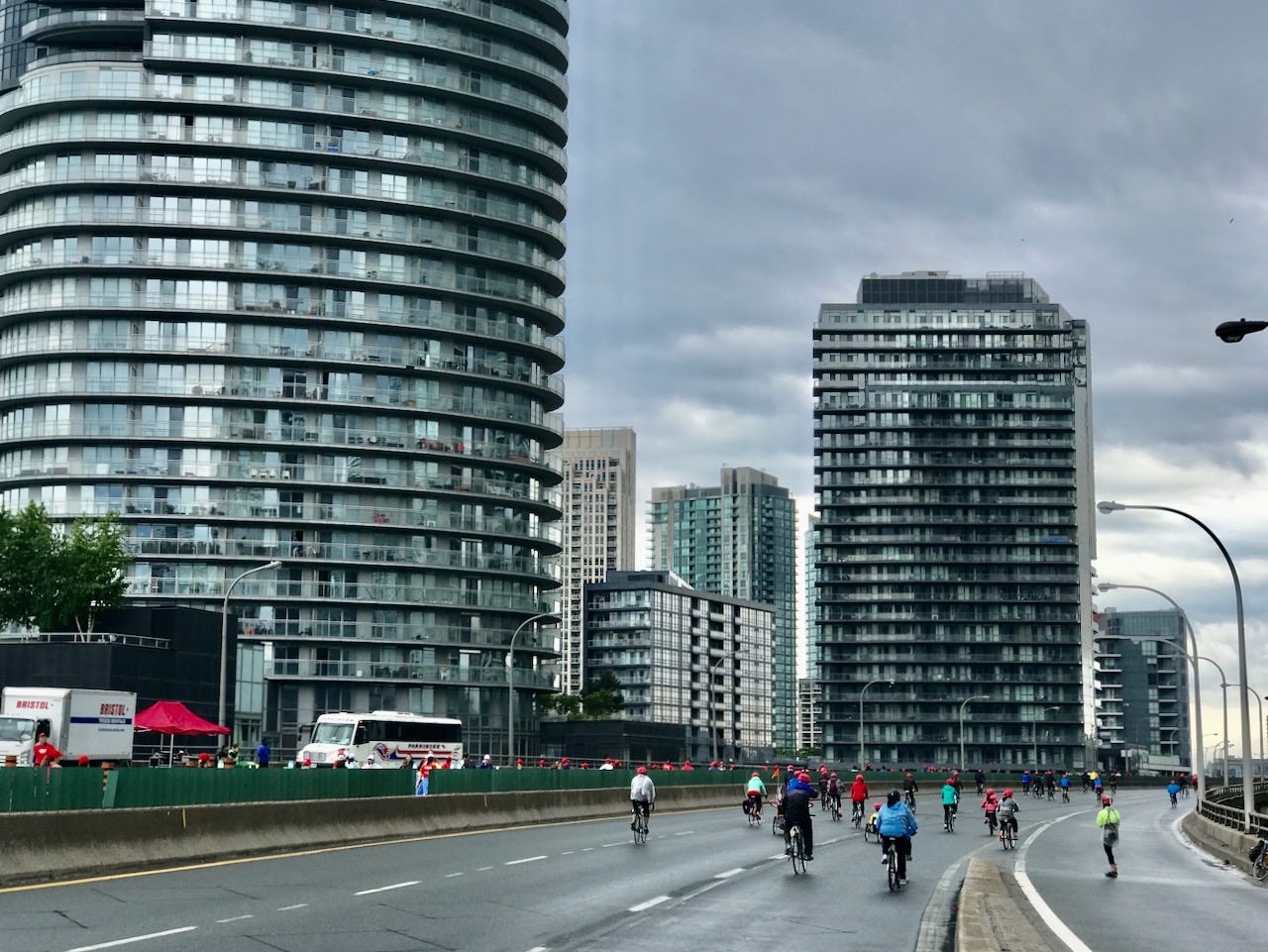
While I won’t disagree with the general idea that we should be burning less stuff, we need to be careful when weighing and balancing risk. We have created a global crises in health care by prescribing broad spectrum antibiotics as a reflex to any minor complaint that might, possibly, maybe be bacterial just so doctors can sooth the anxieties of panicking hypochondriacs set off by the latest “study” and in an effort to sustain an inhumane food production system. We poison our homes by scrubbing our counters and floors and walls and toilets and sinks and ourselves with viciously toxic chemicals in a misguided attempt to create operating room sterile conditions in our homes and then are surprised when our kids start developing all sorts of allergies, cancers and gastrointestinal problems. We build homes oversized homes and construct them out of and fill them with products made with chemicals that our physical systems have no evolutionary capacity to manage. Because they are so large they cost a fortune to heat and cool so, rather than make them smaller, we seal them up until we are effectively living inside a plastic bag. Then, to try to prevent the inevitable suffocation and poisoning that would otherwise follow, we install complicated hvac systems that require sophisticated and dedicated levels of monitoring and regular and expensive maintenance that almost nobody properly monitors or maintains and then wonder why we end up with all sorts of health problems related to indoor air quality. We approach problems created largely by our insatiable appetite to have more stuff as fixable with more stuff rather than stepping back and asking weather we need or even really want it or if we are just rats trained to flip the lever to get our next hit of whatever “drug” is pushed on us by the marketing machinery of a global production system premised on the delusional idea that perpetual economic growth is viable long term proposition. Gas stoves and similar straw men are not in the end our real problem. Our real problem is the failure to embrace the idea that, once the basic needs of food, shelter and security are met, having less stuff is the key to a door behind which lies the real possibility of more and better life, for us and the rest of those that share this rock.
If you follow the evidence in the links for the claim, "gas stoves...pump out twice as much as when cooking on an electric stove," you come to a US DOE study about 2.5 emissions. I browsed through it and there is not a lot of evidence that supports this claim strongly.